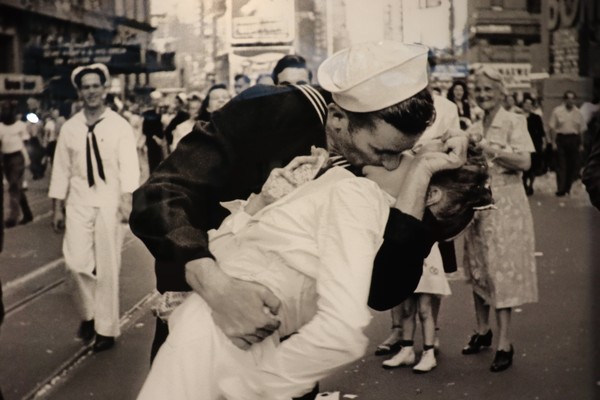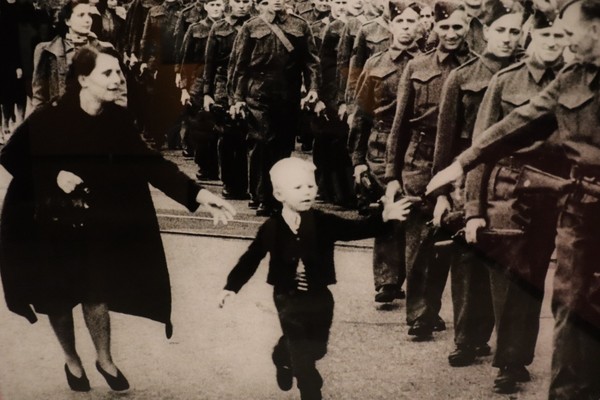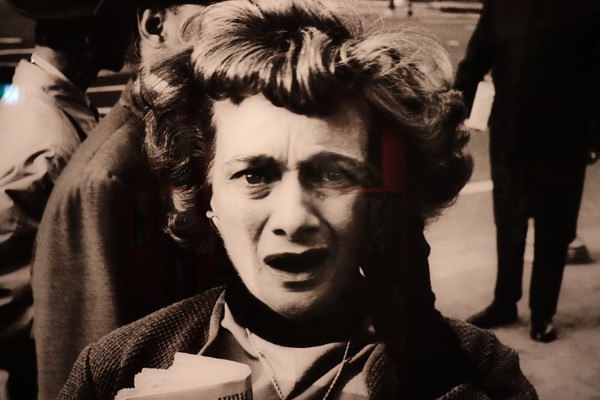As the saying goes: "classic is forever." Classic things and styles are loved by us steadily. The dictionary definition of classic refers to “works of art that were made in the past and are still highly regarded throughout the ages.” A classic can be a work of art, a specific event, or a specific character. The exhibition <Life: The Classic Collection> displays more than 100 classic photographs from various countries around the world that are shared across ages and generations. The exhibition <Life: The Classic Collection> mainly covers photographs from the 1930s to 1960s from the photography magazine <Life>. Although the photos were simply conveyed in black and white, they were creatively composed and expressed with their use of light and shade. Don't you want to appreciate the pain of war, the joy of the end of war, great heroes and artists, new lives, or daily lives recorded by <Life>? Through the exhibition, you will be able to indirectly experience hot historical moments through classical works of art, as if you had traveled in the past. Let's dive into the <Life: The Classic Collection> exhibition with CAH.
The Classic Collection

Many images are being produced every day. Photos are taken with more diverse techniques, and in more special places than in the past. However, images photographed a century ago are called "classics," and are steadily loved by the public. The reason is that photographs called “classics” still affect our lives in the modern era. In this collection, you can see classical works about why war deserves criticism, how science changed the world, and how politics affected the world. Since the most talked about topic in this collection is war, let's look at the pictures related to each country's war. First, it is a World War II, a global war. <V-J Day in Times Square> is a very famous picture by Alfred Eisenstaedt, and you have probably seen it before. This picture was taken on August 14th, 1945, when Japan surrendered to the United States. When the war ended, an American sailor, unable to control his joy, hugged and kissed a woman dressed as a nurse. It is a picture that shows the joy of the end of the war because it is between a soldier and nurse, two people who had suffered the most during the war. Next is a photo of victims standing in a long line to receive food and clothing being distributed in front of a relief station. In contrast to the tired-looking victims, there is the sign behind them written in "World's highest standard of living," and "There's no way like the American way." Isn't that ironic? The expression of people contrasting with the phrase makes us sad.

Then a photo of a young child running to hold his father's hand while marching showed the family had to be separated due to the World War II. It is tragic to see a mother's hand trying to hold a running child and a father reaching out his arm to hold the child's hand. Next, is from the war in Vietnam. Due to the war in Vietnam, you can also view pictures of U.S. Marine soldiers in trenches in Vietnam. His unfocused eyes and smudges on his face show how very tired he is. Finally, is a photo from the war in Germany. You can also view photos related to the genocide by the German Nazis. In the photo, victims are holding the Buchenwald concentration camp's iron bars with surprised eyes when the troops arrived to take victims away. Another photo shows a Nazi war criminal who feels no guilt. Adolf Eichmann was a member of the Nazi Party in Germany and was responsible for executions during the Holocaust. Even when he was handed over to stand trial after the end of the war, he repeatedly said, "I only followed orders," and did not repent his sins at all. And the way he is resting peacefully in Kishon Prison, Israel, is offensive to us.
Photojournalism

The exhibition's organizer, photo magazine <Life> was founded in 1936 and is the most successful magazine in history. <Life> published 1 million copies within a year of its inception, and a total of 13.5 million copies were published around the world in the 1940s. <Life> has 8 million regular subscribers even today, and it was a key source of information throughout the world before television became popular. The photo shows the first U.S. presidential debate on television. 70 million Americans watched the debates. A confident Kennedy gave viewers faith, and the tired-looking appearance of Nixon gave him no credibility. In the subsequent elections, Kennedy was elected as a president. This photo became a preview of the power that the media would slowly gain. Next to the photo is a New Yorker shocked by the news of President Kennedy's assassination. Her frowned brows and open mouth give a sense of great shock. There is also a picture of Yves Saint Laurent's sorrowful appearance at Dior's funeral. Through this photo, the public could see famous designers who were not easy to see in person. Through all this, <Life> become an important medium of communication that connects the public and society. There is also a photo of Beatles members playing in the water at a swimming pool in Miami, USA. Just as we see the daily lives of celebrities through the Internet in modern times, people looked to these magazines in the past to see the daily lives of celebrities at the time.
<Life: The Classic Collection> is an exhibition of mostly black-and-white photographs. Even though pictures in the exhibition have a little color created using light and darkness is simple and clear, attracting the viewer’s attention. Rather than being distracted by the colorfulness, you can focus on the subject and appreciate the picture. Also, when viewing the exhibition, a special free audio guide is available to help you understand the works. The reason why this audio guide is special is that people with jobs related to each work or people who experienced related events recorded the descriptions themselves, so viewers can enjoy the images more vividly. For example, in the previous work of Adolf Eichmann, a criminal psychologist participated in the audio guide. Don't you want to see a picture that resonates deeply with us in <Life: The Classic Collection>? <Life: The Classic Collection>, an exhibition with vivid pictures, is waiting for you.
Dates: April 5th, 2022 (Tuesday) ~ August 28th, 2022 (Sunday)
Hours: Tuesday to Saturday: 12:00~21:00/ Sunday: 10:00~19:00
(Entrance closed: Tuesday to Saturday 20:00/ Sun: 18:00)
*Closed every Monday
Place: MUSEUM 209 (3rd floor, Sofitel Ambassador Seoul Hotel)
Ticket Prices: 15,000 won for adults / 12,000 won for children and teenagers
Contact: 02-6953-8016

